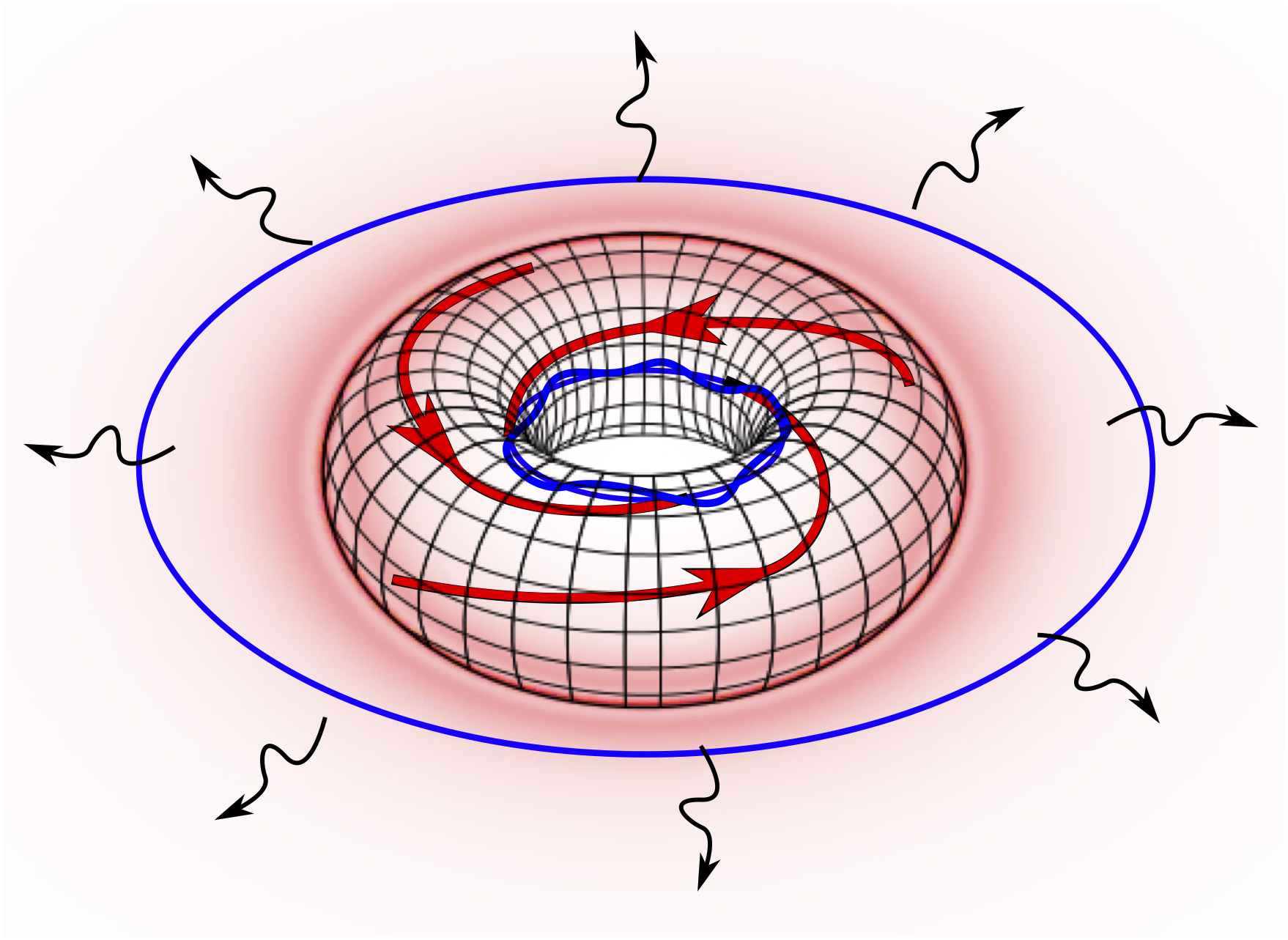Five of the groundbreaking gravitational wave detections by the LIGO/Virgo collaboration have been interpreted as black hole collisions forming a more massive black hole. It is hard to demonstrate conclusively that these objects are indeed black holes, and there is a lively debate on the intriguing possibility that other, more exotic alternatives could explain the observations. An article by Pedro Cunha, Emanuele Berti and Carlos Herdeiro, published today in Physical Review Letters, provides a generic no-go theorem for these exotic alternatives.
The remnant black hole born from black hole collisions vibrates with a characteristic signature - a “sound” similar to a ringing bell. This special signature, called ringdown, is related to the existence of special orbits called “light rings”: around a black hole, gravity bends light so much that light rays can circumnavigate the black hole (so if you were close enough to a black hole, you could see the back of your head). Some exotic alternatives to black holes can also have light rings, and therefore they can ring down just like black holes. It has been proposed that these “black hole mimickers” could have produced the events observed by LIGO/Virgo.
This Letter shows that if the compact object is not a black hole, it must necessarily have a second light ring. This second light ring differs from the first in one crucial way: it traps radiation. The trapped radiation piles up and destabilizes the exotic compact object, making it unlikely to exist in Nature. The implication is that these exotic objects are generically unstable, and therefore that the LIGO-Virgo detections are really evidence for black holes.
The figure below is a schematic illustration of an ultracompact object with two light rings: the unstable light ring produces gravitational radiation that can potentially imitate the signal from a black hole, but the second (stable) light ring traps radiation and destabilizes the object.
